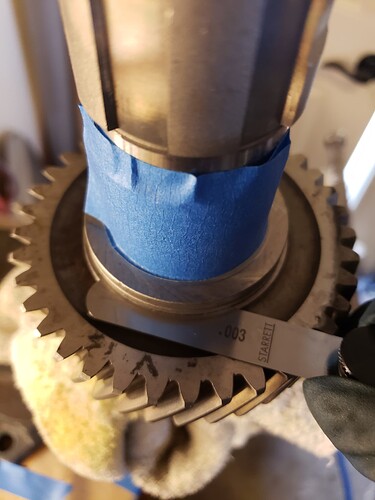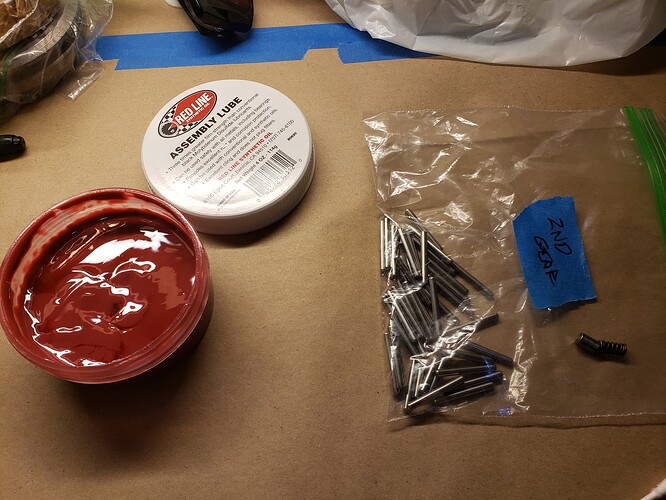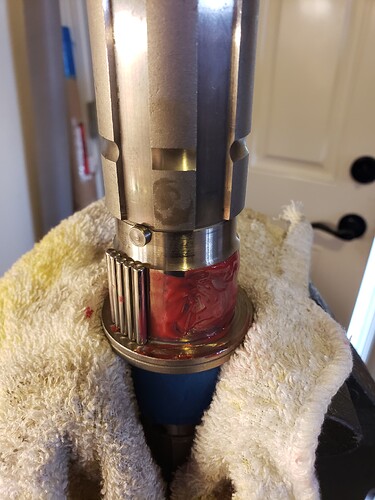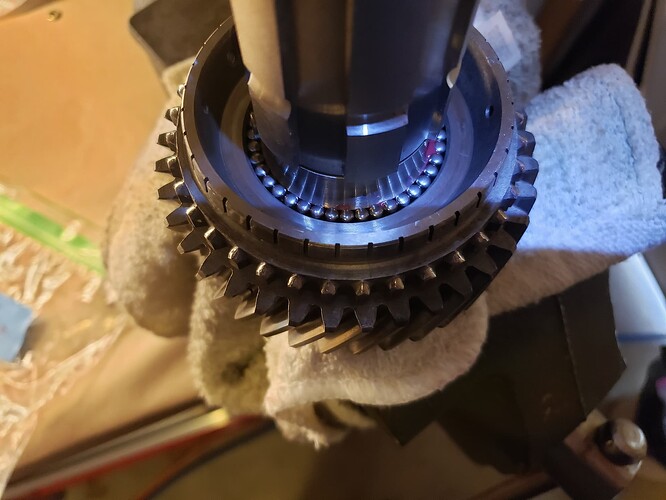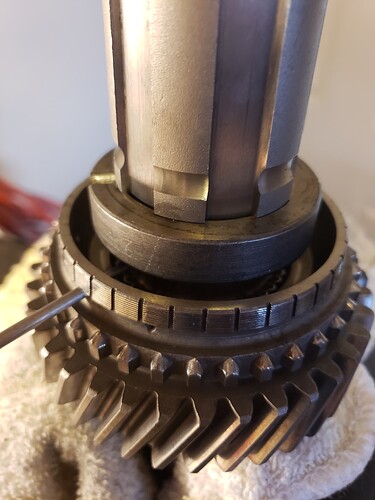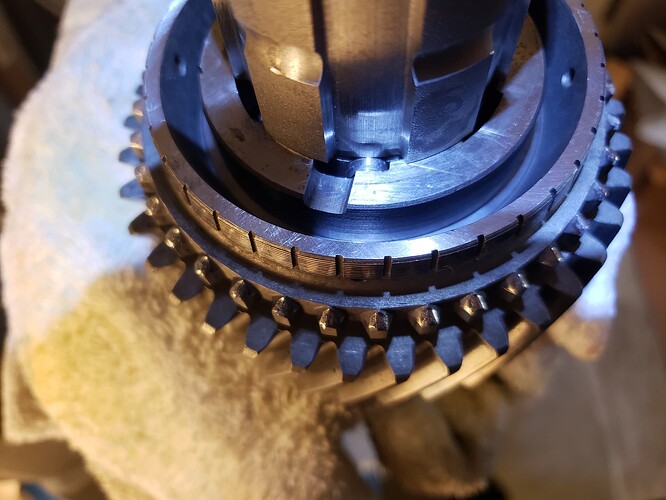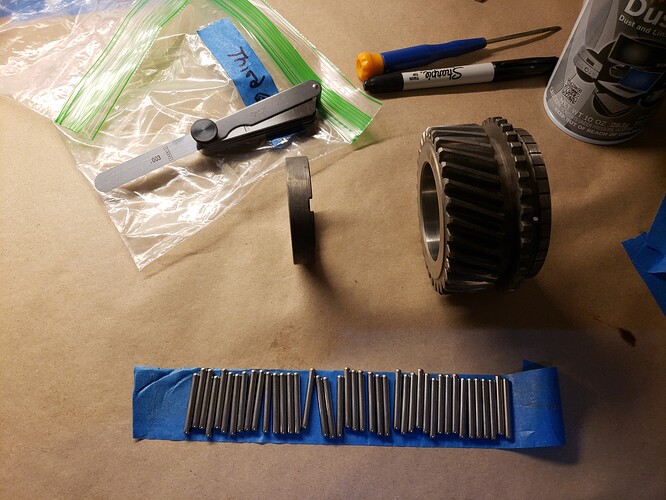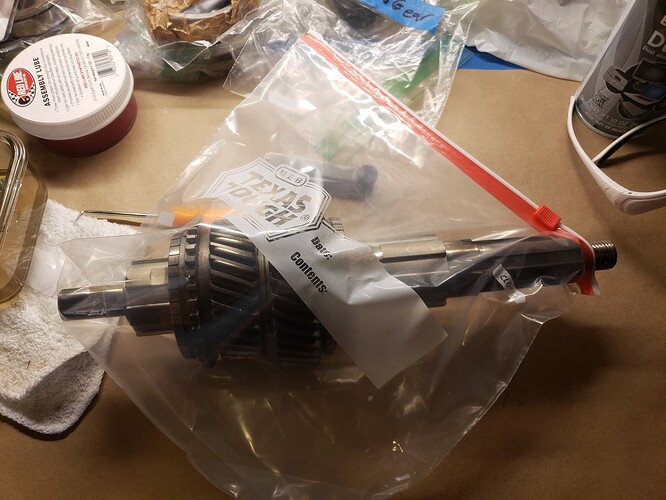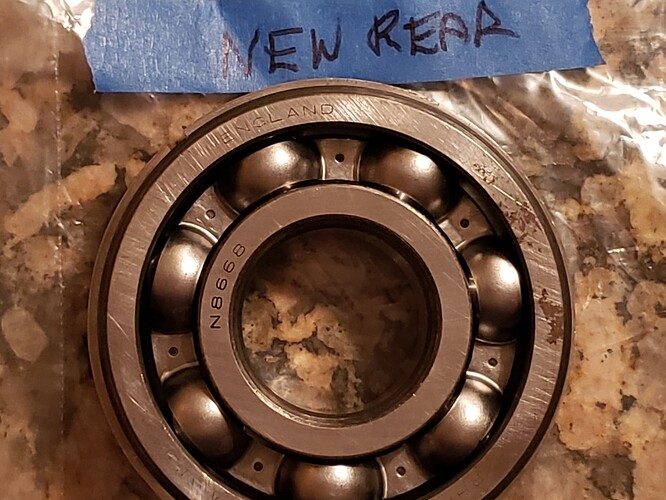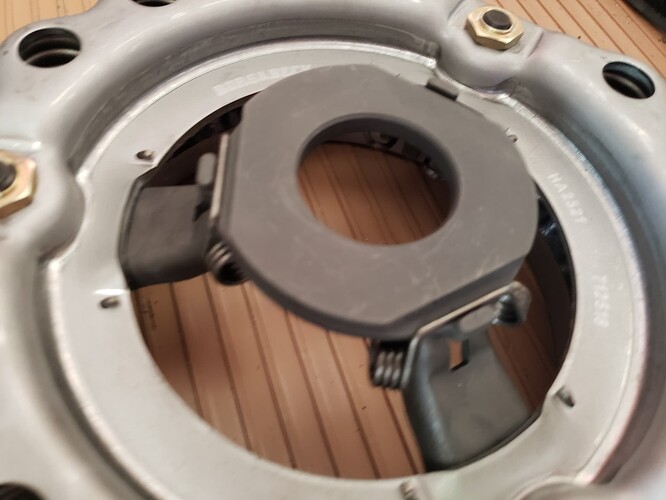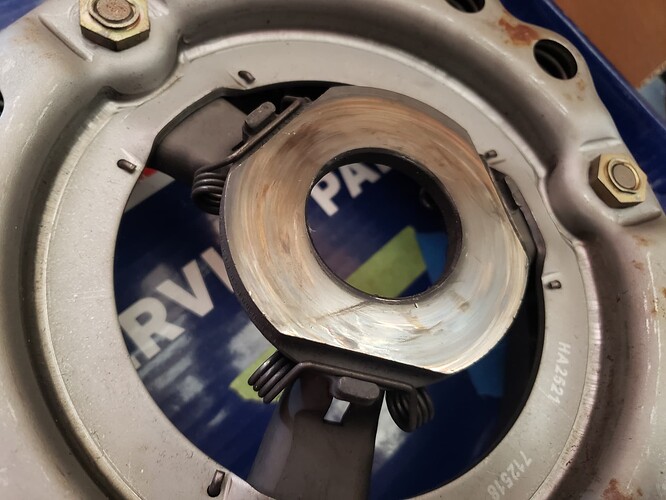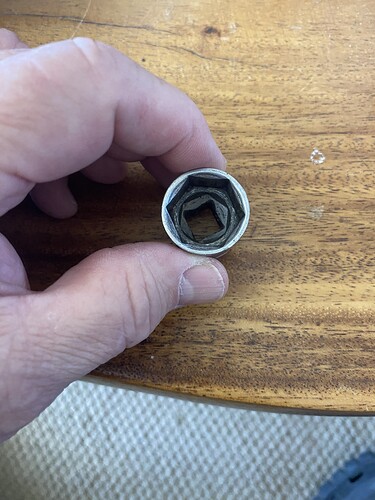Got a thing or 5 done this weekend. The layshaft is assembed and installed. Sorry no photos. My phone was charging. It was less stressful than I expected. With a bit of assembly grease the needles go in easy and they’re held nicely against the gear’s inner wall by keeper rings on both ends of each course of needles. I was afraid they could be dislodged seeing as you have to use just a thin rod to hold it up until the main shaft is installed, but the keepers hold everything together well.
I was pretty shocked to find that the previous rebuilder had assembled it with a shim that left a full .008 gap. I can only assume he measured carelessly. There is a stack of parts on that shaft and to get the true gap you kind of need to push it all to one side. It’s now .0025. Very happy
Next start building up the mainshaft. This is trickier on a Moss because the gears aren’t shimmed per say. Adjustment is done by using retaining collars of different sizes. These aren’t available new but can be sourced used occasionally. I had 4 on hand to choose from.
Assemble each gear temporarily. The book says use the needle bearings, but I didn’t see the point at this stage. This is 2nd gear. The exposed 3rd gear journal is wrapped with tape to protect it, and the vice jaws are padded and barely pinching.
Note the very nice synchro hub grooves on this new gear
Flip it over to measure and allow the gear to rest on the locking collar, .003 right in the middle of the correct range. When I took it apart, both gears were out of spec.
Assembly time, I like this Redline grease. It’s very light but holds parts well and the fuchsia color is ![]()
Carefully slide the gear over while wrapping a clean hand around the bearings to keep them in place.
Insert the spring and locking pin (it’s a different spring from the 12 springs in the synchro sleeves. Don’t mix them). The circled cutout should be one spline away from the locking pin when you slide it on the shaft
Rotate the gear so the larger hole faces the pin and push it in far enough with a small screwdriver to be able to nudge the collar over the pin and push it onto the gear.
Rotate the collar one spline until the pin pops out
Flip over and repeat for 3rd gear. This one also came out to .003 gap, perfect. Note my needle keeper. I stick them all to tape so I don’t accidentally drop them, and I roll them off the tape one at a time so it will catch any possible thing that might have jumped on them when I wasn’t looking. You have to be scrupulously clean through all this. Each part went through multiple rounds of scrubbing in thinner and blowing off with compressed air and was bagged up until assembly.
Now bagged up safe while I set up the synchro sleeves. Apparently I should have bought main shaft sized freezer bags.


